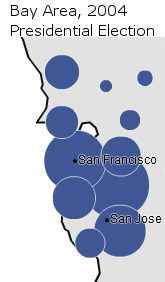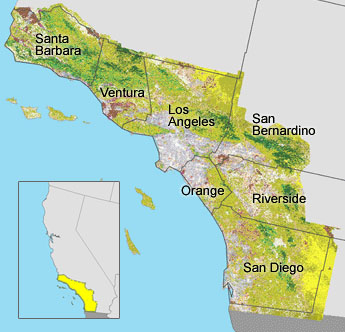This is the part of a series of posts analyzing competitive Senate elections in blue states. It will focus on California. Because California is such a big and complicated state, it will have two sections – of which this is the first. The second part can be found here.
California, Section 1
In the greatest state of the union, a fierce senatorial battle is brewing. Former HP executive Carly Fiorina is mounting a tough challenge to incumbent Democrat Barbara Boxer. In an anti-Democratic national environment, polls show the race close and competitive. This post will examine the obstacles Ms. Fiorina will face as she seeks to overcome California’s formidable Democratic geography.
As America’s most populous state, California contains a number of distinct regions. This post, and the one following, will examine each.
More below.
Upper California and the Sierra Nevada
When people think of California, the northern forests and year-round snow of the Sierra Nevada generally do not come into mind. These regions, geographically expansive yet thinly populated, tend to vote loyally Republican (although until the 1970s Democrats had a base of support in several northeastern counties).
Not all of this region is Republican-voting, unpopulated wilderness. Exurban Placer County, for instance, contained 173,812 voters in 2008. Other parts – especially the liberal coast – tend to vote Democratic, eating into Republican strength.
Ms. Fiorina will probably need something like 70% of the vote in places like Placer County to win. Strong margins from this Republican stronghold constitute the first, easiest step to a Republican victory.
The Bay Area
In many ways, the Bay Area is what makes California a blue state. Without the Bay Area, for instance, President George W. Bush would – almost – have won California in 2004, losing by a mere 0.7%.
Unfortunately for Republicans, the Bay Area – one of the richest, most diverse, and most liberal places in the country – does indeed exist, and it votes strongly Democratic. A popular attack against Senator Boxer is to call her a San Francisco liberal; this generally works less well in San Francisco.
In addition, voting habits in the Bay Area tend to be “sticky.” If the rest of California moves ten points more Republican, the Bay Area will tend to move only five points right. San Francisco and Alameda counties are sometimes the last two counties standing during Republican landslides.
There is a glimmer of hope for Republicans, however. The counties surrounding San Francisco and Berkeley tend to be one degree less intense in their liberalism. Ms. Fiorina will not win them, but a well-run campaign can reduce Democratic margins somewhat.
Central Valley
Home to some of the richest farmland in America, the counties composing Central Valley once leaned Democratic but now vote Republican in all but Democratic landslides. Conservative and heavily populated – although not by California standards – Central Valley provides somewhat of a reservoir to offset the enormous Democratic margins radiating from the Bay Area.
There is, however, one important exception: Sacramento, a populous county whose Democratic leanings deny Republicans a vast store of potential votes.
In the long run, Central Valley is a ticking time bomb. Democratic-voting Latinos compose 30-50% of the population in many of these counties, and their numbers will only increase. For now Ms. Fiorina is safe – Latinos do not vote their numbers, especially in mid-terms – but future Republicans cannot take Central Valley for granted.
The Challenge of Southern California
It is in the urban sprawl of SoCal, however, where Republicans face their greatest challenge. Ms. Fiorina has two tasks here. The first is to win the counties outside Los Angeles, and win them big. The second is to keep Los Angeles itself within single digits.
The next post will expand upon SoCal and offer a conclusion on Republican prospects of winning California.
–Inoljt, http://mypolitikal.com/



